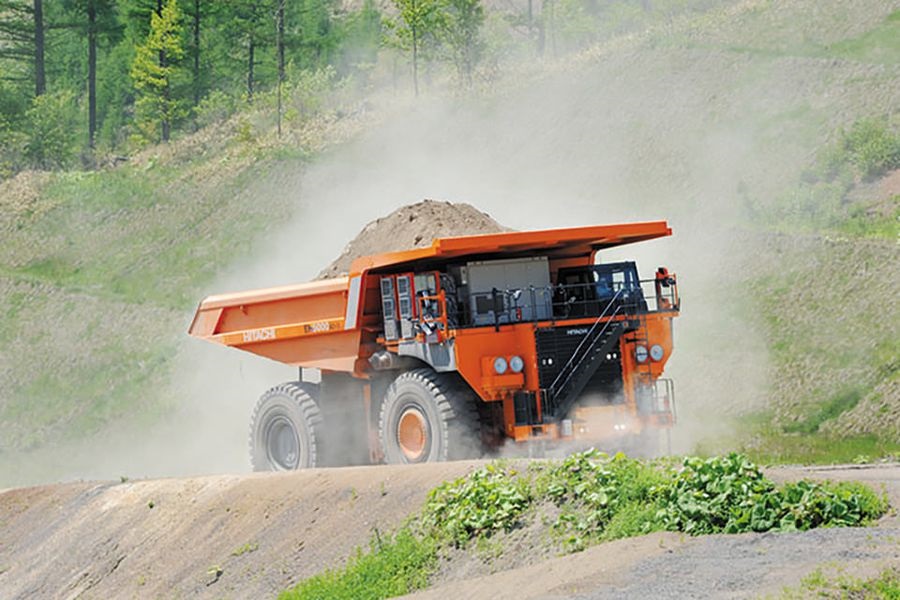While autonomy has started to catch on in Western Australia’s iron ore sector, coal miners on the eastern side of the country have been slow to adopt such technologies. Research firm Wood Mackenzie thinks that could change with a number of new, large projects starting to come online after 2025.
The reasons East Coast coal miners have shied away from autonomous trucks, drills and trains now operating across the iron ore ranges of the Pilbara are mostly tied to mining complexity and high capital spend, according to WoodMac’s Brent Spalding.
Without labour reductions or output increases, autonomous retrofits produce minimal operating cost savings, he said.
But, that hasn’t stopped Whitehaven Coal from signing up to an Autonomous Haulage System (AHS) development at its Maules Creek operations in New South Wales.
Earlier this month, the company agreed to mobilise a fleet of six autonomous Hitachi EH5000AC3 haul trucks at one of the mine’s operating pits by 2019 as it looked to improve safety and efficiency. If proven successful, the technology could be rolled out across the mine.
The collaboration between the two companies will entail scoping the delivery and commissioning of phased AHS deployment for the fleet at Maules Creek and the establishment of the physical and technological infrastructure to support AHS capability.
But wider adoption among the Australia coal sector is some way off, Spalding said. This is despite numerous operating cost and safety benefits already seen in Western Australia iron ore operations.
“In iron ore, we have seen increased productivity levels of 15-20% mainly driven by higher output levels. Output levels have increased at autonomous mines because of improved equipment utilisation, less downtime due to fewer shift changes and breaks, and a drop in labour absenteeism,” he said.
“Safety has also proven to be a key driver of automation. To date, there have been no injuries attributed to autonomous vehicles within the Australian iron ore sector.”
Yet, these results require additional upfront capital not necessarily paid back with higher financial returns.
“For iron ore, we estimate no real change in net present value across automated and non-automated sites, because the operating cost savings are presently offset by the high capital spend,” he said.
Autonomous retrofits of haul trucks, which Fortescue Metal Group and Rio Tinto are in the process of carrying out, cost in the order of $500,000 per truck, according to Spalding.
He sees this capital outlay falling as access to autonomous technology improves and becomes more readily available, while added productivity improvements could lead to further cost savings.
Yet, at current costs, the return on investment in coal doesn’t make sense, according to Spalding’s numbers.
He applied the same 15-20% improvement in unit rates (excluding diesel) for truck haulage and the same increase in labour productivity seen in WA iron ore across Australia coal.
This analysis was based on an average surface coal mine operating at the mid-point of the Australia cost curve and assumed a surface coal mine with a strip ratio of 6.5 bank cubic metres per raw tonne, producing 10 million tonnes per year of raw coal with a productivity of 13,333 raw tonnes per employee.
“When adjusting at 15%, we estimate a decline in raw total cash costs of 10% (or $2.69 per tonne) to $25.44/t. At 20%, we estimate costs 12% lower at $24.66/t,” Spalding said, noting raw costs do not take into account processing yields.
“In this Australia coal scenario, the total labour component accounts for close to one-third of the total raw unit cost. However, for the 15% and 20% productivity improvement scenarios, we estimate the labour component will account for more than 60% of the total cost saving. So, it stresses that if labour is not reduced – or output increased – as part of the automation process, cost savings will be limited to approximately $1/t for both scenarios,” he said.
But, OEMs and autonomy specialists should not despair; a slate of new, large projects could be ripe for such solutions.
“Beyond 2025, there could be more opportunities for driverless trucks through the development of some larger projects in excess of 20 Mt/y, which include Glencore’s Wandoan coal project in the Surat basin and Adani’s Carmichael in the Galilee basin,” he said.
Wandoan is expected to produce 22 Mt/y of thermal coal at full tilt, while Carmichael is reported to have a 60 Mt/y capacity.
The reason these greenfield projects are more likely to adopt such technologies – aside from the obvious safety benefits – is because “they represent a clean slate, where the mine plan can be geared towards automation from the start, rather than be retrofitted or changed as the mine develops”, Spalding said.
“There could even be a further option for driverless trains given the rail infrastructure still needs to be developed for these Queensland coal basins.”











